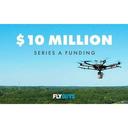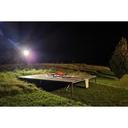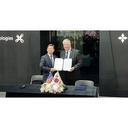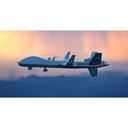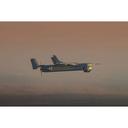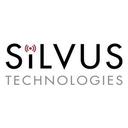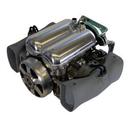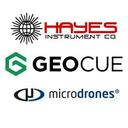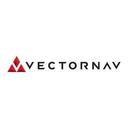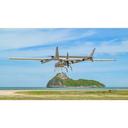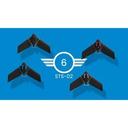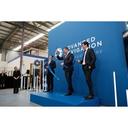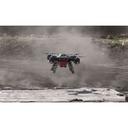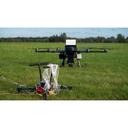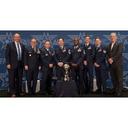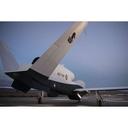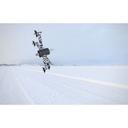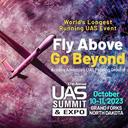FlyGuys announces the closing of its Series A funding round, securing an investment of $10 million. This substantial financial boost is poised to catalyze relentless innovation and create a scalable software solutions platform.
Quantum Systems becomes the first European company to raise over €100 million on dual-use technology, further solidifying its global leadership in AI-powered drone-robotics.
FlytBase and Skyqraft have partnered to empower system integrators and enterprises in the transmission and distribution sectors with autonomous drone operations and analytics on their grid infrastructure.
In collaboration with RigiTech and utilising the innovative Eiger platform, Delivrone initiated operating BVLOS delivery routes in Northern France.
General Atomics Aeronautical Systems, Inc. (GA-ASI) signed a Memorandum of Understanding (MOU) with Huneed Technologies for the Korean company to produce a flat panel array for GA-ASI’s Lynx® and Eagle-Eye Multi-mode Radar systems.
Republic of Korea-based ROKADI has signed a Purchase Order to supply General Atomics Aeronautical Systems, Inc. with fuel interface rings for GA-ASI’s new MQ-9B SkyGuardian®/SeaGuardian® Unmanned Aircraft Systems.
Insitu Pacific and Innovaero will collaborate on an integrated solution for a long-range strike capability using uncrewed aircraft systems (UAS), providing a versatile solution in an increasingly complex battlespace.
At the UAS Summit, Senator John Hoeven outlined the growing synergy between unmanned operations and the nation’s space missions and the impact of the Test Resource Management Center’s (TRMC) Sky Range program at Grand Sky.
Thread announced that it closed a Series A funding round in the amount of $15M. This new round of funding accelerates Thread's horizontal expansion across asset types and enables the company to continue developing its UNITI platform.
Vigilant Aerospace Systems announced that it has been awarded a contract by the US Air Force (USAF) to develop a detect-and-avoid system (DAA) for the Air Force’s new long-endurance drone.
General Atomics recently advanced its Aerial Recovery System for Small Unmanned Aircraft Systems/Air-Launched Effects (SUAS/ALE) by deploying and retracting a towline with a “smart end feature” from a GA-ASI MQ-20 Avenger UAS in flight.
Silvus Technologies, Inc., a global leader of advanced wireless networking communication systems, introduced StreamCaster PRISM, a new family of modular Precision Integrated Sectorized MIMO antenna radio systems at the AUSA Annual Meeting and Expo.
Northwest UAV has announced that its newest heavy-fuel UAV engine, the NW-230, has achieved first flight operations with an undisclosed customer. The flight was conducted on a hybrid vertical take-off and landing (HVTOL) UAV.
Hayes Instrument Co. LLC is the latest distributor to announce its exciting new partnership with GeoCue and Microdrones, industry leaders in UAV LiDAR technology and solutions.
VectorNav is expanding its lineup of tactical GNSS/INS solutions with the VN-210-S and VN-310-S, bringing all-new GNSS capabilities and improved performance to operations in GNSS-contested environments.
Near Earth Autonomy and Kaman Air Vehicles announced that they have been awarded a contract by the U.S. Army to demonstrate a resupply UAS capable of moving loads with a minimum of 800 pounds and flying distances over 100 miles.
The VTOL 600h has been equipped with a hybrid propulsion concept. In addition to the four rotors for vertical take-off and landing, the VTOL 600h also has a tail drive for horizontal flight.
Anduril unveiled the Anvil-M, a new munitions variant of its autonomous ‘Anvil’ interceptor drone that can effectively intercept and defeat threats from Group 1 and Group 2 unmanned aircraft systems.
AgEagle Aerial Systems Inc. announced that the eBee X™, eBee TAC™ Public Safety, eBee™ Ag and eBee™ Geo drones (“eBee X Series“) have been designated with the C6 class identification label in accordance with the European Union regulations.
Advanced Navigation has unveiled a new high-tech robotics facility for autonomous systems based at UTS Tech Lab in Botany, New South Wales, Australia.
National Security Innovation Capital has awarded a $1M contract to Parallel Flight Technologies. This contract will support the advancement and expansion of its Long-Range UAS to address emerging defense and commercial applications.
A new program manager stepped into command for the Navy and Marine Corps Small Tactical Unmanned Aircraft Systems program office during a change of command ceremony Sept. 21 at Naval Air Warfare Center Webster Outlying Field, St. Inigoes, MD.
Over 300 participants from 15 Allied and three partner nations, the European Union and the private sector gathered in the Netherlands to increase their ability to counter potential threats posed by the malign use of small drones.
Applied Intuition, Inc. announced that it was awarded a Phase III Small Business Innovation Research contract by AFWERX Autonomy Prime to deliver synthetic data to train an aided target recognition algorithm.
The Mitchell Institute for Aerospace Studies and General Atomics presented the 2022 Remotely Piloted Aircraft Squadron of the Year Award to the 2nd Special Operations Squadron at a special ceremony.
Northrop Grumman Corporation will produce an additional MQ-4C Triton multi-intelligence uncrewed aircraft for the Royal Australian Air Force following the Australian government’s decision to provide funding.
Red Cat Holdings announced that subsidiary Teal Drones has signed $1.8 million in contracts with U.S. Customs and Border Protection to provide Teal 2 systems to U.S. Border Patrol.
Designed to fly in all weather, from land or sea, WaveAerospace’s VTOL Huntress Turbojet gets eyes on a target faster than any other rotorcraft.
UAS simulator gives JPEO-CBRND the ability to deploy simulation-based training to operators to master the controls and process involved in operating a UAV.
UAS Magazine, the UAS Angel Network, and the Grand Forks Region EDC, announced this week the six companies selected to pitch to a group of angel investors and venture capital firms at the UAS Summit & Expo, taking place October 10-11 in Grand Forks.
Advertisement

